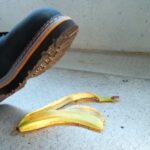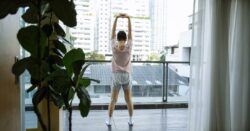9 Types of Evidence You Need to Prove a Slip and Fall Claim
In the labyrinth of a slip and fall claim, evidence plays the role of Ariadne's thread. This article outlines nine crucial types of evidence, including:

- Incident reports
- Surveillance videos
- Photographs
- Witness statements
- Medical bills
- Lost wages verification
- Replacement services receipts
- Personal property damage calculations
Understanding these elements is key to navigate the complexity of proving negligence and injury in such cases, and ultimately securing a successful claim.
Key Takeaways
- Incident reports, surveillance videos, photographs, and witness statements are important types of evidence in slip and fall claims.
- Incident reports can provide specific details of the accident and show past conditions that caused harm.
- Surveillance videos can demonstrate the timing of events leading up to the accident and help prove lack of reasonable action to ensure safety.
- Photographs should be taken immediately after the accident and should include the surrounding area and specific conditions. They can be used to capture weather conditions, injuries, clothes, and the scene of the accident.
The Importance of Incident Reports
In the context of substantiating a slip and fall claim, incident reports serve as crucial evidence, documenting specific details of the accident and potentially demonstrating prior hazardous conditions that might have contributed to the incident. These reports, usually compiled by the property owner or designated representative, are invaluable in establishing the sequence of events leading to the accident.
Moreover, the importance of incident reports is underscored in situations where surveillance videos are unavailable or inconclusive. These reports can provide a written record of the incident, the conditions at the site, and any steps taken by the property owner to mitigate dangers.
The role of surveillance videos and incident reports in a slip and fall claim is paramount, as they can conclusively establish the circumstances leading to the incident.
The Role of Surveillance Videos in Slip and Fall Cases
Surveillance videos serve a crucial role in slip and fall cases, providing a real-time account of the events leading up to the incident, potentially demonstrating a property owner's knowledge of hazardous conditions, and offering evidence of a failure to take reasonable measures to ensure safety. Their importance is amplified when considering the role of expert testimony in interpreting the footage and the impact of weather conditions on the incident.
| Role of Surveillance Videos | Importance |
|---|---|
| Real-time Account | Provides an unbiased timeline of events |
| Expert Testimony | Interprets the footage and provides professional opinion |
| Weather Conditions | Highlights the environmental factors contributing to the incident |
These aspects collectively enhance the credibility of the claim and substantiate the plaintiff's allegations. Therefore, securing surveillance videos should be a priority in slip and fall cases.
Utilizing Photographs as Evidence
Utilizing photographs post-accident serves as a critical component in substantiating allegations in slip and fall cases, often capturing the scene's specific conditions, weather, injuries, and attire, which could potentially influence the outcome of the case.
The role of photographs in slip and fall cases extends to providing visual evidence of hazardous conditions that may have contributed to the incident, such as spilled liquids, uneven surfaces, or inadequate lighting. Furthermore, photographs can also capture any relevant signage that may or may not have been present at the time of the incident.
Equally significant are incident reports. These official documents can corroborate the photographic evidence and further establish the liability of the property owner, by detailing the circumstances of the slip and fall event.
The Power of Witness Statements
Witness statements hold significant sway in substantiating allegations in slip and fall cases, providing firsthand accounts of the incident and potentially highlighting the property owner's negligence. Building a strong case with witness statements is crucial, as these can corroborate the claimant's version of events, adding credibility to the case. Witnesses may also provide critical details that the victim may not have noticed, further strengthening the case.
Similarly, the importance of gathering incident reports cannot be undermined. These reports, typically created by the business or property owner, capture the specifics of the accident. The report can help establish the property conditions at the time of the fall, prove the owner's knowledge of the hazard, and their failure to rectify it, thereby bolstering the negligence claim.
Medical Bills and Records: Your Key to Proving Injuries
Medical bills and records serve as indispensable components in substantiating actual injuries resulting from incidents such as slips and falls. The importance of medical records cannot be overstated in these instances since they provide concrete evidence of injuries sustained and treatments administered.
| Medical Document | Purpose | Importance |
|---|---|---|
| Medical Bills | Detail the cost of treatments | Demonstrate financial impact |
| Doctors' Notes | Document injuries and treatments | Provide professional medical opinion |
| Prescriptions | Validate medication required | Affirm severity of injuries |
In the pursuit of justice, these records provide an accurate account of the financial burden associated with the incident. Furthermore, they are instrumental in seeking compensation for personal property damage, which may be an additional consequence of the incident. A comprehensive understanding of the substantial role medical records play in personal injury cases is essential.
Verifying Lost Wages: A Critical Step
Verification of lost wages plays a significant role in personal injury cases, as it provides tangible proof of economic loss resulting from an accident. This process involves obtaining a comprehensive statement from the employer, detailing the employee's regular pay, hours lost due to injury, and corresponding lost wages.
For individuals who are self-employed, evidence preservation is paramount. Documentation such as:
- Past year's tax returns,
- Profit and loss statements,
- Invoices,
- Correspondence with clients
should be meticulously maintained to substantiate the claim of lost earnings. These documents provide a snapshot of the income that was likely to have been earned had the accident not occurred.
Thus, verifying lost wages becomes critical in affirming the full extent of economic damages in slip and fall claims.
How Receipts for Replacement Services Contribute to Your Claim
Transitioning from the verification of lost wages, the focus now shifts to the crucial role of receipts for replacement services in substantiating a slip and fall claim.
It is paramount to acknowledge that the aftermath of such incidents often necessitates the engagement of replacement services, ranging from transportation to childcare. These services, although ancillary to the direct medical costs, contribute significantly to the overall financial impact borne by the claimant.
Hence, meticulous compilation and submission of these receipts can bolster the claim, facilitating comprehensive compensation.
Additionally, any personal property damage incurred during the incident should be rigorously documented, with proof like photographs and repair or replacement estimates. This aids in seeking pertinent compensation for personal property damage, ensuring a holistic redressal of the claimant's predicament.
Calculating the Cost of Personal Property Damage
Calculating the cost of personal property damage involves a thorough assessment of items worn or carried during the incident, from clothing and electronics to groceries and jewelry. The process involves several steps:
- Thorough itemization of damaged property with detailed descriptions and photographs.
- Preserving damaged items as evidence to refute potential claims that these contributed to the incident.
- Obtaining estimates for repair or replacement costs from reputable sources.
- Submitting this information, along with any related receipts, as part of the claim.
This meticulous approach not only supports the claim for compensation for property damage but also provides a robust challenge to any counter-argument from the defendant.
The ultimate goal is to ensure a fair and comprehensive settlement that appropriately compensates the claimant for all losses incurred.
Preparing Your Evidence: A Comprehensive Guide
Establishing a robust foundation for a successful compensation claim after an accident requires meticulous collection, preservation, and presentation of diverse forms of evidence. This process of preparing evidence entails a thorough gathering of proof from various sources such as incident reports, surveillance videos, photographs, witness statements, and medical bills and records.
Essential in this preparation is the detailed documentation of each evidence type, ensuring its relevance and authenticity. Surveillance videos and photographs should accurately depict the accident scene and conditions, whereas witness statements must substantiate the claimant's account.
Medical bills and records, along with verification of lost wages, provide tangible proof of financial losses incurred. Lastly, receipts for replacement services and cost of personal property damage further fortify the claim, aiding in the pursuit of a fair compensation.
Frequently Asked Questions
What Role Does a Personal Injury Attorney Play in Gathering Evidence for a Slip and Fall Claim?
A personal injury attorney plays a pivotal role in evidence prioritization for a slip and fall claim. Their expertise aids in identifying, gathering, and presenting crucial evidence. They guide in procuring incident reports, surveillance videos, photographs, and witness statements.
Assistance extends to securing medical bills, records, verification of lost wages, receipts for replacement services, and proof of personal property damage. Their understanding of legal nuances ensures that all evidence is comprehensive, compelling, and legally admissible.
Are There Any Specific Legal Procedures to Follow When Collecting Evidence for a Slip and Fall Case?
To ensure successful litigation in slip and fall cases, specific legal procedures are essential. Key among these is evidence preservation, which involves careful documentation and safe storage of relevant materials, including incident reports, photographs, and surveillance videos.
Moreover, the role of witnesses is crucial, as their testimonies can substantiate claims of negligence or unsafe conditions.
These procedures, diligently executed, can significantly strengthen a slip and fall claim.
Can Social Media Posts Be Used as Evidence in a Slip and Fall Claim?
Exploring the legal landscape of privacy implications, the legitimacy of social media as evidence in slip and fall claims merits consideration. Courts have increasingly accepted social media content as admissible evidence, given its potential to substantiate or refute claims.
However, it is subjected to the same authentication and relevancy tests as other forms of evidence. Despite its accessibility, potential privacy issues may arise, necessitating a balance between evidentiary value and privacy rights.
How Long After the Accident Can I Still File a Slip and Fall Claim?
The statute of limitations for filing a slip and fall claim varies among jurisdictions, with most falling within a one to three year period post-incident. Understanding these claim filing deadlines is essential to ensure legal rights are preserved.
Failure to file within the prescribed time limit could result in forfeiture of the opportunity to pursue compensation. Therefore, it's advisable to consult with a legal professional promptly following a slip and fall accident to understand the specific timeline.
What Should I Do if the Property Owner Refuses to Share Surveillance Footage or Incident Reports?
In situations where property owners decline to share surveillance footage or incident reports, legal recourse may be necessary. Access to such footage is critical in substantiating a slip and fall claim, demonstrating Footage Access Rights' importance.
Equally significant is the Incident Report, which can establish the specifics of the event and the conditions leading to the accident. Therefore, engaging a legal professional to issue a subpoena might be required to obtain these key pieces of evidence.

This post has been generated by AI and was not reviewed by editors. This is Not legal advice. Please consult with an attorney.




